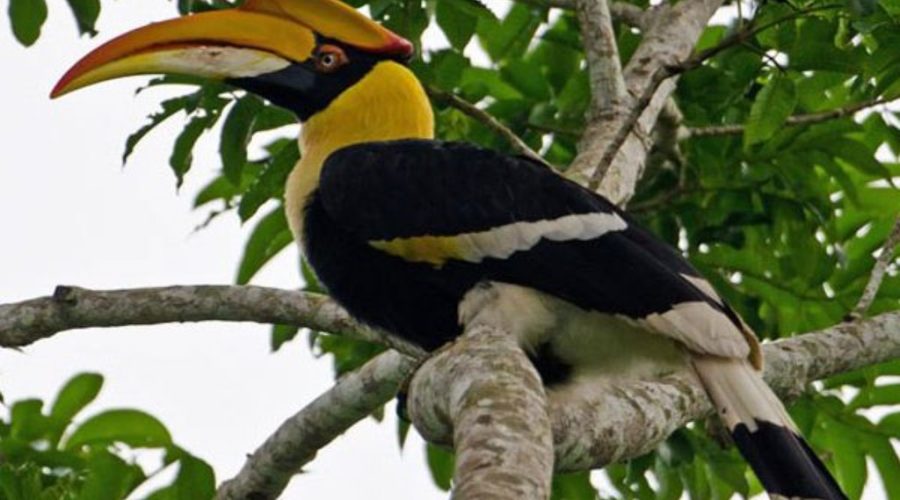
Welcome to the picturesque Paro Valley, home to Bhutan’s only international airport. Surrounded by serene landscapes and rich cultural heritage, Paro sets the tone for your Bhutan journey. Start with an exploration of Paro Dzong (Rinpung Dzong), a stunning 15th-century fortress that also serves as the district’s administrative center. Continue to Ta Dzong, a former watchtower now housing Bhutan’s National Museum.
Begin your day with a hike to Taktsang Monastery (Tiger’s Nest), perched dramatically on a cliffside. The trail offers spectacular views, with prayer flags fluttering in the breeze. Stop at a cafeteria mid-hike for a panoramic view of the monastery. After lunch, visit Kyichu Lhakhang, one of Bhutan’s oldest temples, known for its spiritual significance.
Drive to Thimphu, Bhutan’s vibrant capital, known for its harmonious blend of tradition and modernity. Start your sightseeing with a visit to Simtokha Dzong, Bhutan’s oldest fortress, followed by the National Library, which holds an extensive collection of ancient Buddhist texts. Discover Bhutan’s artistry at the Textile Museum and Simply Bhutan, a living museum showcasing traditional lifestyles. Conclude the day with a stroll through the Craft Bazaar, perfect for purchasing authentic Bhutanese souvenirs.
Ascend to Dochula Pass, adorned with 108 chortens, offering panoramic views of the Himalayas. Descend to the subtropical valley of Punakha to explore Punakha Dzong, a masterpiece of Bhutanese architecture nestled at the confluence of two rivers. Before that we will visit Chimi Lhakhang, the “Fertility Temple,” famous for its unique blessings.
Travel to the enchanting Phobjikha Valley, home to the endangered black-necked cranes. Enjoy scenic stops en route, including the bustling town of Wangdue. Upon arrival, immerse yourself in nature with a leisurely walk through the valley and a visit to the Black-Necked Crane Information Centre to learn about these majestic birds.
Drive to Trongsa, passing through Pelela Pass with its rich biodiversity. Along the way, stop at Chendebji Chorten, a stupa inspired by Nepalese architecture. Birdwatching opportunities abound as you traverse lush forests, home to Himalayan species such as the Mountain Hawk Eagle and the Satyr Tragopan.
Journey south to the Tingtibi Valley, an unspoiled paradise for birdwatching enthusiasts. Explore dense forests teeming with species like the Yellow-Rumped Honeyguide and the Rufous-Necked Hornbill. Enjoy the peaceful ambiance of this remote region, ideal for nature lovers.
Dedicate the day to discovering Tingtibi’s vibrant avifauna. Spot rare birds like the Great Hornbill, Red-Headed Trogon, and Racket-Tailed Drongo. The warm broad-leaved forests offer a haven for wildlife and an unforgettable experience for birdwatchers.
Retrace your journey to Trongsa, stopping for birdwatching and photo opportunities along the way. Visit unexplored forest regions like Namling, which offer sightings of unique species such as Ward’s Trogon and the Satyr Tragopan.
Head back to Thimphu, crossing scenic mountain passes like Pelela and Dochula. En route, visit Wangdue Dzong, a site steeped in history. Enjoy a relaxing evening in Thimphu.
Spend the morning in Thimphu, exploring additional attractions or indulging in local cuisine. Later, drive to Paro for your final night. Reflect on your journey while soaking in the valley’s tranquil charm.
Bid farewell to Bhutan as you board your flight home. Leave with cherished memories of breathtaking landscapes, vibrant culture, and warm Bhutanese hospitality. Tashi Delek!
We compiled a list of frequently asked questions about Bhutan travel. If you do not find what you are looking for, please feel free to contact us (WhatsApp/ call +975 17171610 or email at asiavalleystravels@gmail.com)
The Sustainable Development Fee (SDF) is a daily levy paid by visitors to support Bhutan’s development. Since the kingdom first opened its doors in 1974, guests have played a critical role in our country’s growth.
The national exchequer and this fund are allocated to various projects that create long-term, sustainable opportunities for the Bhutanese people, through free healthcare, education and training, upskilling the tourism and hospitality industry, improved infrastructure, environmental preservation and conservation, cultural preservation programmes and initiatives that support local businesses and economies.
This funds also plays a vital means of maintaining the exceptional forest cover and carbon-neutrality for which our small nation is world-renowned and globally critical. The SDF also helps us to ensure that we can continue to offer guests tranquillity and an intimate experience.
The SDF is USD 100 per night for adults from all countries except for India. Children aged between 6 years and who have not yet turned 12 are eligible to pay USD 50 per night. Children who have not yet turned 6 years old do not have to pay any SDF.
The SDF for Indian nationals (showing a valid Indian passport or Voter ID card) is Nu. 1,200 (or the equivalent amount in Indian rupees) per person, per night. Children aged between 6 years and who have not yet turned 12 are eligible to pay Nu./INR 600 per night. Children who have not yet turned 6 years old do not have to pay any SDF.
No. This incentive is not combinable with the SDF waiver for border towns.
Tourists visiting Samtse, Phuentsholing, Gelephu, and Samdrupjongkhar towns for 24 hours need not pay Sustainable Development Fee (SDF) beginning April 14, 2023. The waiver will be enforced for a year. The SDF waiver will only apply for tourists who do not travel beyond the designated zones of border towns. However, SDF will apply for visitors who travel beyond the designated zone of border towns.
Tourists will be charged SDF if they go beyond Gurung Basti in Samtse, and beyond Rinchending Checkpost in Phuentsholing. The designated zone in Gelephu is at Aipoli Bridge and Pinchinna checkpost in Samdrupjongkhar.
Extensions must be made in person at the Department of Immigration and must be paid in US Dollars.
For Indian Nationals, extensions can be made in person at the Department of Immigration and must be paid in INR.
The guests should cancel their visa application and apply again. Please allow at least five working days to process the visa application. The SDF that they have already paid can be used when applying again and any excess will be refunded. SDF payments cannot be refunded after guests have either arrived in Bhutan or have departed Bhutan.
Yes, guests who have already obtained a visa and booked trips to Bhutan can take advantage of the new SDF incentive. They will need to cancel their existing visa application and re-apply. Please note that DoI will forfeit their original visa fee (USD 40) and guest will be required to pay the USD 40 visa fee again when they process their new visa application. The SDF that they have already paid can be used when applying again.
Only guests from India are eligible to pay the rate of Nu. 1,200 (or equivalent in Indian Rupees) per day.
Yes, the SDF will be refunded by the Department of Immigration for any cancelled or shortened trips; any bank charges will be deducted from the total refunded. Requests for SDF refunds should be submitted online using the visa portal. The refund will be processed after visitors leave Bhutan.
Yes, the SDF will be refunded for any nights that are not spent in the kingdom.
The most popular time of the year for visiting Bhutan are the spring months of March, April, and May and the fall months of September, October, and November. Also, many festivals take place in spring and fall. However, we believe, Bhutan is a year round destination. The winter months start from December to February, but the typical sky then is clear with bright sunshine. The monsoons start from June through August with only light showers during the evenings & nights. Many savvy travelers are discovering the advantages of lean season travel to Bhutan during the winter months of December through February and the summer months of June and July.
All International tourists wishing to enter Bhutan require a visa which must be pre-arranged through a license Bhutanese Tour Operator like us. Visa clearance must be obtained through us prior to travel. For Indian passport (or VIC) holders, Bangladeshi nationals and persons from the Maldives may obtain a visa on entry. There is a misconception that obtaining visa to visit Bhutan is very difficult. This is not the case. Visas can be obtained in about three working days, if all papers are in order. All forms and paperwork will be processed by us and the following items are the only things required of you, to process visas for Bhutan
You may depart for Paro International Airport (Bhutan) from Bangkok, Singapore, Kathmandu, New Delhi, Kolkata, Mumbai, Bagdogra or Guwahati airports. At present two carriers operate to Bhutan – Drukair and Bhutan Airlines. We can help secure reservations on either of the airlines. Ticket purchase can also be taken care of by us and sent across to you, as all tickets are E-tickets. Reconfirmation, changes etc can all be routed via our office.
Bhutan now has a host of variety of hotels. You can get standard hotels with all the basic necessities, clean and hygienic. There also a number of luxury hotels offering the best of facilities matching any international 5 star property. You can also choose to camp or try out the home stays in villages that are now becoming very popular with guests.
The most distinctive characteristic of Bhutanese cuisine is its spiciness. Chillis are an essential part of nearly every dish and are considered so important that most Bhutanese people would not enjoy a meal that is not spicy. Rice forms the main body of most Bhutanese meals. It is accompanied by one or two side dishes consisting of meat or vegetables. Pork, beef and chicken are the meats that are eaten most often. A wide selection of western and Indian food is also available in many of the restaurants around the country.
The weather varies across different parts of Bhutan. Depending on the altitude, the climate varies from semi-tropical to alpine. In Thimphu, the capital city, the temperature ranges from -2.5°C in winter to 25°C in summer. In Southern Bhutan, the climate is tropical in the monsoon season and may range from 15°C in winter to 30°C in summer. The east is also warmer than the west. The central regions enjoy sub-tropical climate with very cool winters while the northern parts of the country have harsh climate including snowfall two to three times every winter.
Bhutanese currency is known as the Ngultrum. It’s value is tied to the Indian Rupee which is also accepted as a legal tender. Most tourist hotels and few shops also accept international currencies like US dollar and the Euro and major credit cards i.e., VISA and Master card are accepted. Major convertible currencies and travelers’ cheques can be exchanged at banks in all major towns.
+975-1717-1610
info@asiavalleystravels.com
asiavalleystravels@gmail.com

